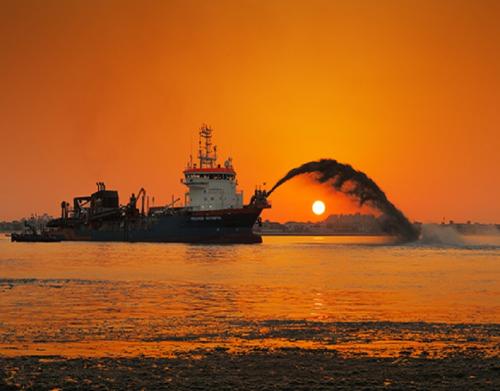What are the different ways of dredge spoil disposal?

The marine industry is apparently always at risk of getting
stuck due to a large shove in sedimentation. There are many communities that
focus on preserving the marine environment and preventing pollution in the
waterways. Dredging is a process in which materials are excavated from water
bodies using large machinery and equipment. Dredge spoil is combination of
sediments that include soil, rock, and metals. These materials are extracted
and deposited using different methods. It is helpful to know what are the
methods used for dredge spoil disposal.
There are many companies that offer dredging services and
simultaneously handle sediment reuse and management. Port operators and
companies that deal in shipping may need the services of dredging experts
mostly because they need them multiple times every year.
Dredge spoil disposal is carried out in various ways. Areas
such as beaches, lakes, and commercial fishing areas frequently need dredging
activities and there need arise for disposal at minimum costs.
Open water disposal
A large chunk of muddy sediments are extracted from harbors
and estuaries and then it is released at a nearby site. This is usually done on
water surfaces that often attract high-velocity sea waves. Dredged sites have
seen several problems after the process that includes a decrease in macrofaunal
abundance and variations in the composition of marine species. In many states,
there is a complete ban on open water dredge spoil disposal which is in the
nation’s best interest to an extent.
Land disposal
Land disposal isn’t a very common way to discard dredged
material. These large sites can be used for other development projects or
wildlife habitat. However, dredging projects are increasingly resulting in more
landfills. Large volume of contaminated sediments can greatly impact the
environment. Dry solids, plastic, and dredge slurries are real danger for
marine pollution. Sediment reuse is the best
choice in order to keep the environment clean and also for subsequent
utilization.
Deepwater disposal
Spoil disposal in deepwater is more viable alternative
disposal technique but should first be the point of research to conclude basic
questions regarding biologic effects of contaminants in largely undiscovered
environment. As an outcome of the concern over open water disposal of dredged
material, there will certainly be more land disposal of dredged spoil in the
coming years.
Both removal and disposal of dredged sediments is
important. However, both the process can be detrimental for the marine
environment. Management of dredge spoil disposal in a way that prevents
pollution is essential. Marine and estuary disposal sites can be monitored by
regulatory agencies to avoid any illegal activities.
Post Your Ad Here
Comments